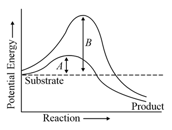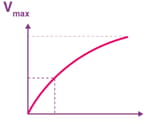EASY
Earn 100
Mention the functions of dehydrogenase.
Important Questions on Biomolecules
HARD
Study the following
| (I) | value | Affinity of the enzyme | Inverse measure enzyme affinity |
| (II) | Hydrolases | bonds | Linking compounds |
| (III) | Transferases | Transfer of a group | Inhibitor of reaction |
| (IV) | Emil Fisher | Lock and key hypothesis | Formation of ES complex |
The correct combinations are
MEDIUM

HARD
Find out where transketolase and epimerase reactions occur among the following:
i) Fructose bisphosphate
ii) Sedoheptulose- Phosphate Xylulose Ribose Phosphate
iii) Ribose Phosphate Ribulose Phosphate
iv) Xylulose Phosphate Ribulose Phosphate
v) Fructose Phosphate XylulosePhosphate Erythrose Phosphate
The correct combination is
MEDIUM
MEDIUM
| Group I | Group II |
| P. Hydrolase | i. Inter-conversion of optical isomers |
| Q. Lyase | ii. Oxidation and reduction of two substrates |
| R. Isomerase | iii. Joining of two compounds |
| S. Ligase | iv. Removal of a chemical group from one substrate |
| v. Transfer of a chemical group from one substrate to another |
MEDIUM
EASY
MEDIUM
Match the enzymes in Column I with their respective biochemical reactions in column II. Choose the correct combination from below
| Column I | Column II |
| (P) Transaminases | (i) Removal of a phosphoryl group from a specific amino acid |
| (Q) Protein Kinases | (ii) Removal of α-amino group from a specific amino acid |
| (R) Protein Phosphatases | (iii) Addition of phosphoryl group to a specific amino acid |
| (S) Dehydrogenases | (iv) Interconversion of optical isomers |
| (v) Oxidation and reduction of substrates |
MEDIUM
HARD
The following graph shows the concentration of substrate on enzyme activity:

What does the -axis represent?
EASY
EASY
EASY
HARD
MEDIUM
HARD
HARD
MEDIUM

